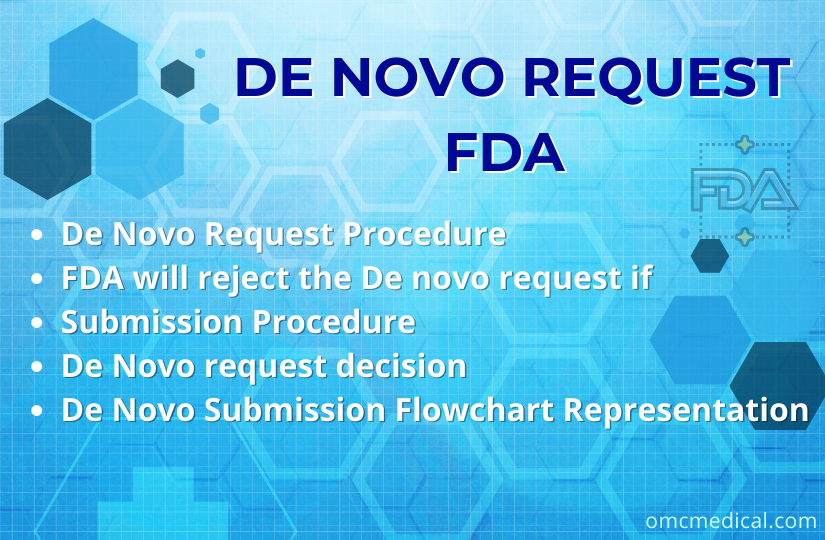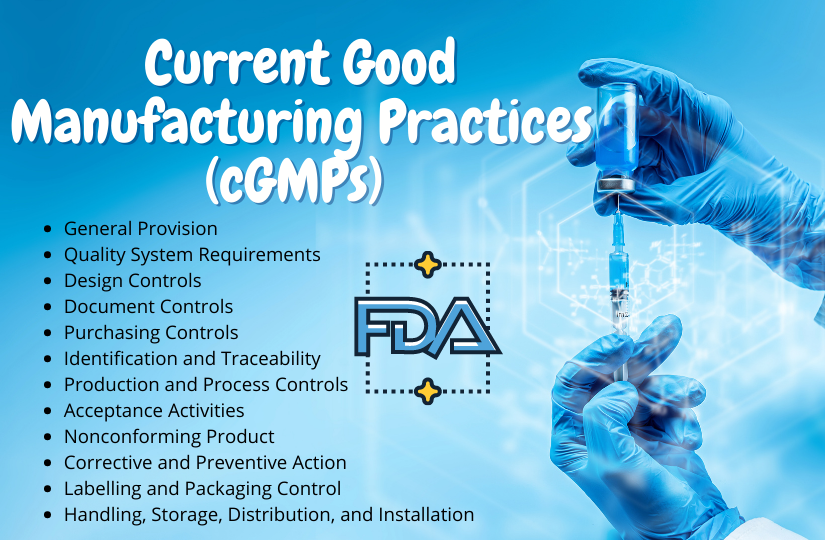The De novo request is a simpler marketing pathway to classify novel medical devices that provide a reasonable assurance of safety and effectiveness for the intended use and do not already have a predicate device on the market.
FDA also declares that the devices marked as Class I or II as per De novo request can be further used as a predicate device for future premarket 510(k) notifications.
De Novo Request Procedure
There are two ways to submit a De Novo request to the FDA for a risk-based evaluation of the device’s classification into class I or II.
Method 1: In response to a previous 510(k) submission that determines the product as high-level not substantially equivalent (NSE).
Method 2: The requester determines that no legally marketed devices can be treated as substantially equivalent. Then without first submitting 510(k), the device can receive a high-level NSE determination.
The FDA recommends that sponsors follow a pre-submission to get feedback from the appropriate premarket review division.
Points to Remember
FDA will reject if:
- The Coversheet of the request does not mention “Request for Evaluation of Automatic Class III Designation.”
- Administrative Information about the device
- Device description
- Classification information and supporting files
- Clinical data (if applicable)
- Non-clinical data, including bench performance testing
- Compatibility and safety studies
- The Benefit-Risk analysis data
Submission Procedure
- Preparing the application inelectronic copy (eCopy) or electronic submission Template And Resource (eSTAR) format.
- Once applied, receive a Unique Document number assigned by CDER/CDRH
- Within 7 days, the centre communicates the applicant with a DeNovo number via acknowledgement letter
- Stage:01 Acceptance Review (Refer to the Acceptance checklist) which is an initial review to evaluate the availability of the document
- Stage:02 Substantive review – a detailed review along with an interactive review to discuss with the applicant for the deficiencies to be resolved
De Novo request decision
The FDA will make a final decision on whether to grant or deny the De Novo request after reviewing it. In some cases, the FDA will consider withdrawing the De Novo request.
If the FDA decides to withdraw a De Novo request, the requester is notified with the De Novo request number and the date the FDA decided to withdraw the De Novo request. These orders aren’t available on the FDA’s website.
De Novo Submission Fee Requirements
The Current fee requirements for De Novo request submission can be found here.
De Novo Submission Flowchart Representation

What are the immediate effects after the FDA grants the De Novo request?
The new device is authorized to be marketed and must be in compliance with applicable regulatory controls
A new classification regulation for the device type is established
The new device may now serve as a predicate device for 510(k) submissions of future devices of the same type, when applicable
The FDA publishes in the Federal Register a notice that announces the new classification regulation and, for class II devices, the new special controls
The FDA posts on its website a copy of the granting order notifying the requester we have granted marketing authorization
The FDA generates and publicly discloses a decision summary
Why does the FDA decline the De Novo request?
General controls or general and special controls are insufficient to provide reasonable assurance of the safety and effectiveness of the device (or)
The data provided in the De Novo request are insufficient to determine whether general controls or general and special controls can provide a reasonable assurance of the safety and effectiveness of the device (or)
The probable benefits of the device do not outweigh the probable risks.
When does the FDA withdraw a De Novo request?
The requester submits a written notice to the FDA that the requester is withdrawing the De Novo request (or)
The requester fails to provide a complete response to a request for additional Information (21 CFR 860.240), or deficiencies identified by the FDA (21 CFR 860.230) are not addressed within 180 days after the date the FDA issues such request (or)
The requester does not permit an authorized FDA employee an opportunity to inspect the facilities (21 CFR 860.240) at a reasonable time and in a reasonable manner and to have access to copy and verify all records pertinent to the De Novo request.
Disclaimer: Regulations/legislations are subjected to changes from time to time and the author claims no responsibility for the accuracy of information.











